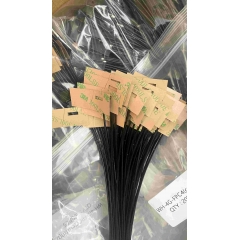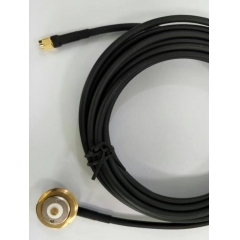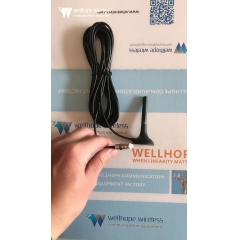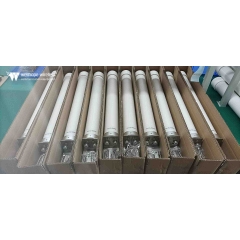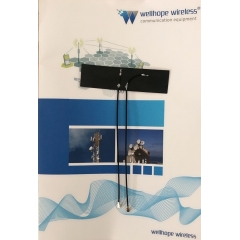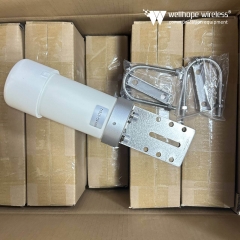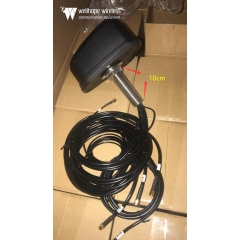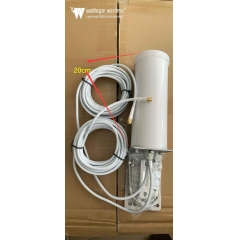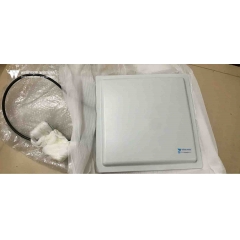Millimeter wave shielding test solution to help 5G millimeter wave communication
Estimated 8 minute to finish reading
The development of 5G technology has been extremely rapid in recent years, and it features high speed, low latency and large connectivity. The current 5G solutions are divided into millimeter wave and Sub-6GHz, except for Sub-6GHz which is now developing at a rapid pace, the progress of millimeter wave is also changing day by day. Millimeter wave, as the name suggests, is an electromagnetic wave with a wavelength between 1-10mm, and now it is no longer just at the research level, but is rapidly entering the commercial level and gradually covering the living periphery.
With the popularity of 5G cell phones, we will find that the Sub6 crowded channel environment can no longer meet the user demand for high data volume and high speed, so the major cell phone manufacturers are gradually looking at millimeter wave. It can be said that millimeter wave is the direction of the next generation of cell phones, so as to meet the general public in the streaming media era for the increasingly high data transmission rate requirements.
However, there are still some problems with the rapidly developing new 5G standard, millimeter wave is too "fragile" compared to Sub6, so it is easy to be blocked by the body, walls, clothes and even phone cases.
Nowadays, there are more and more materials and styles of cell phone cases with the needs of the public, metal cases look beautiful, feel and heat dissipation, drop resistance, but easy to signal shielding problems, and with the widespread use of 5G, wireless charging and other new wireless transmission methods, this will become an urgent problem, the application of silicone, plastic, leather and other materials are gradually hot up. So how will these different material cases affect the phone's millimeter wave antenna?
How to evaluate and select a suitable material for a 5G millimeter wave cell phone when it needs to be equipped with a cell phone case, which is an inevitable problem for cell phone design manufacturers, how to quickly and easily realize the barrier analysis of the material in the early stage, and how to efficiently and economically conduct sampling and verification in the production line? What means are available to analyze the millimeter wave blocking performance of various materials?
La soluzione di test della barriera a onde millimetriche portatile può completare il test dei materiali barriera sempre e ovunque e può essere regolata in base alla domanda, riducendo notevolmente il tempo necessario per il test preliminare del materiale, combinato con la capacità di archiviazione del dispositivo stesso, un solo test , un'esportazione, può realizzare direttamente l'analisi e il confronto di più materiali, garantendo al contempo l'accuratezza dei risultati può far risparmiare notevolmente tempo all'ingegnere. Può far risparmiare tempo agli ingegneri garantendo risultati accurati. Inoltre, fornisce una soluzione di misura della barriera a onde millimetriche modulare per il test della linea di produzione, che consente di testare in modo efficiente ed economico più campioni e il confronto con le condizioni di progettazione, verificando così la qualità della produzione dei prodotti e generando report tempestivi.

L'intero processo di test utilizza un formato di "ricezione e trasmissione", in cui è possibile utilizzare un generatore di segnali portatile o un generatore di mini-segnali per trasmettere una frequenza specifica, un segnale di potenza specifico, attraverso il vincolo dell'antenna direzionale in una determinata direzione, attraverso l'oggetto a essere misurato dall'altra parte dello spettrometro in tempo reale o dello spettrometro portatile Hongke per ricevere il segnale e il feedback ricevuto a quella frequenza. E il feedback ricevuto sulla frequenza della dimensione della potenza del segnale, in modo che l'effetto di attenuazione misurato risponda alla barriera del materiale e alla capacità di mascheramento.


















 Antenna di rete 5G
Antenna di rete 5G

